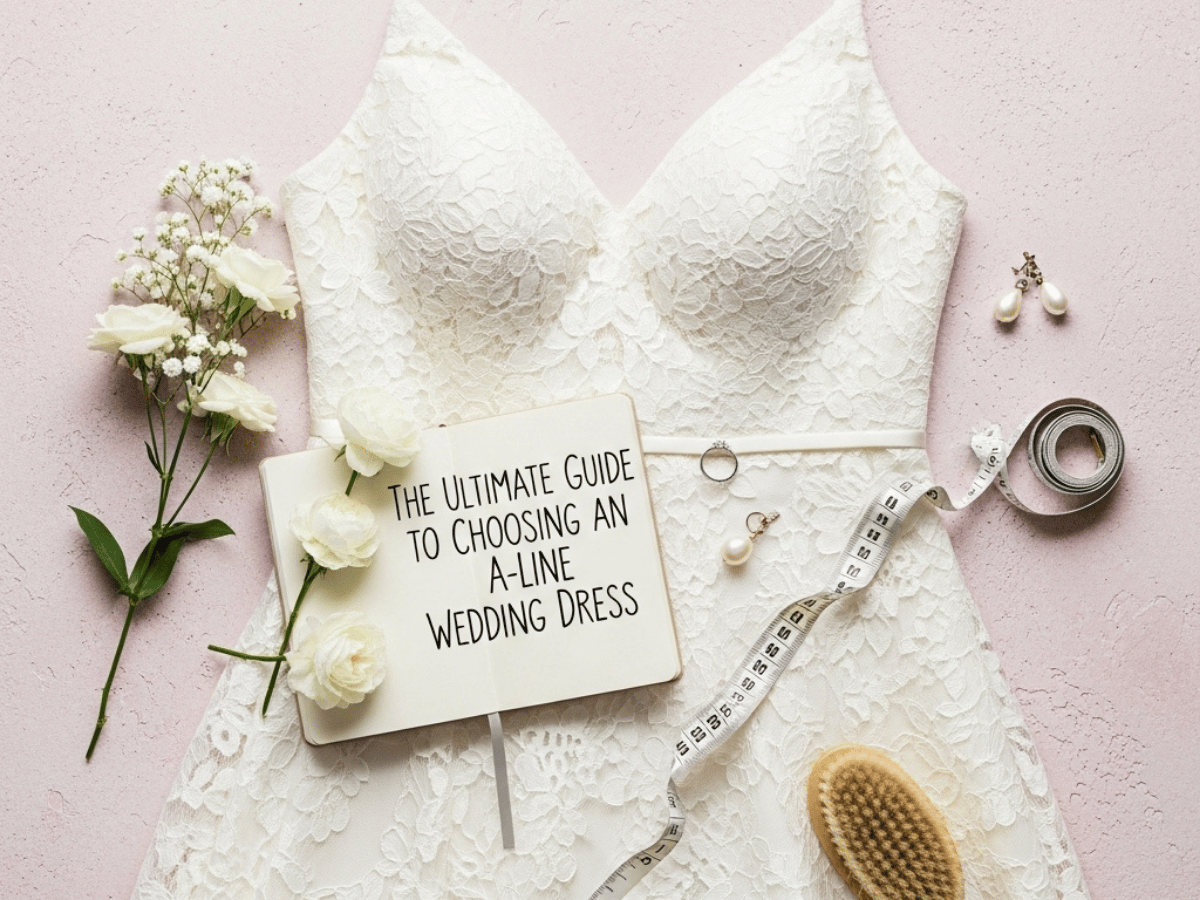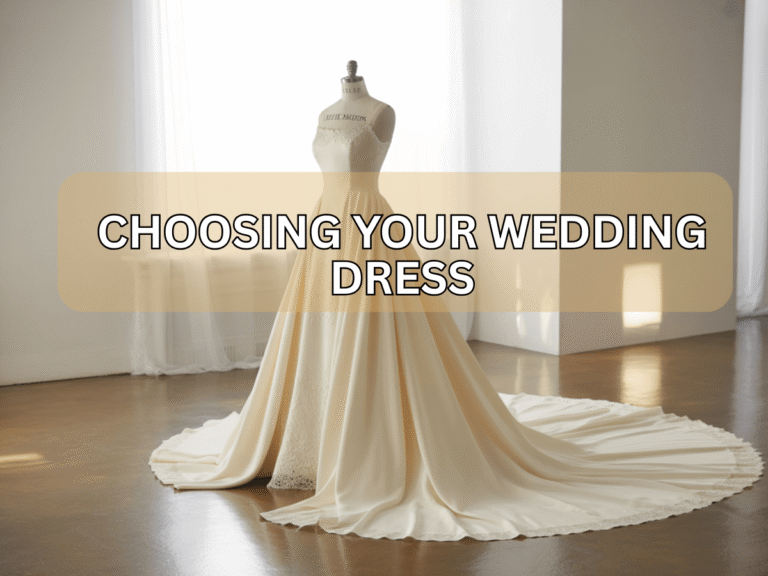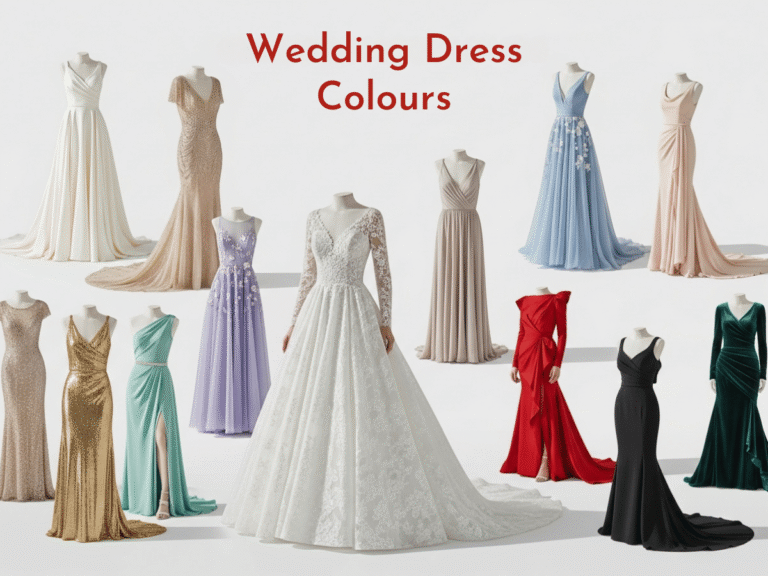The Ultimate Guide to Choosing an A-Line Wedding Dress
When it comes to wedding clothing, few silhouettes are as timeless and versatile as the A-line wedding dress. Known for its fitted bodice that flows into a graceful skirt, the A-line creates a soft and elegant silhouette that flatters nearly every bride. Unlike dramatic ball gowns or body-hugging sheath dresses, the A-line balances comfort, beauty, and tradition, making it a favorite across cultures and ceremonial clothing traditions.
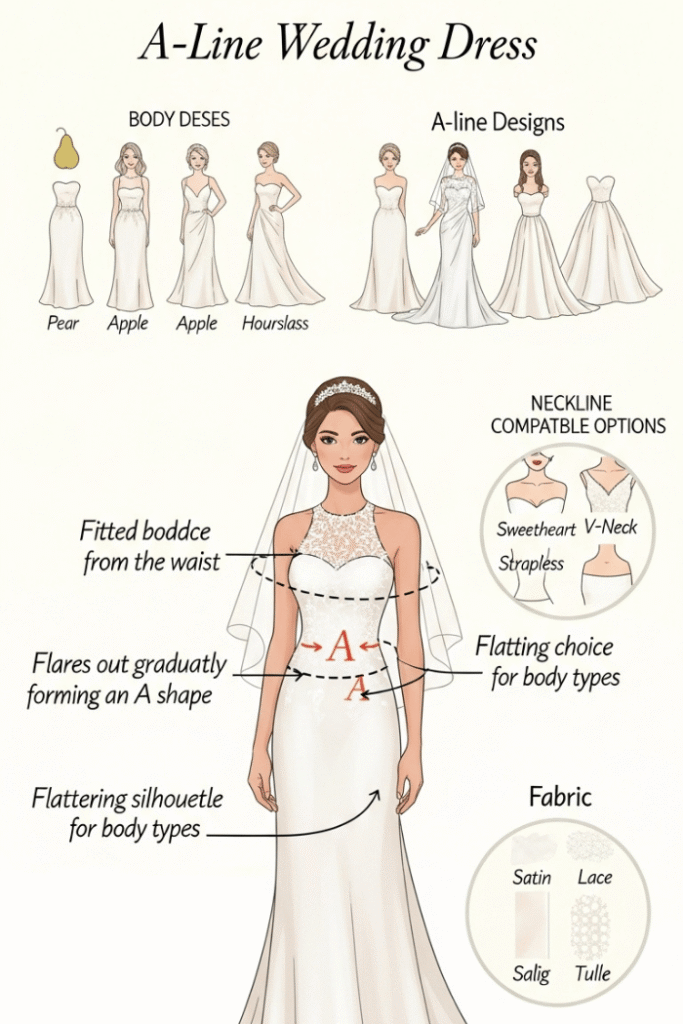
Table of Contents
What Defines an A-Line Wedding Dress?
An A-line gown takes its name from its shape: narrow at the top and widening gently toward the hem, forming the letter “A.” The dress typically features a structured bodice paired with flowing skirts, creating an effect that is both classic and modern. While rooted in fashion aesthetics, it adapts easily to cultural wedding styles and evolving fashion-related occasions.
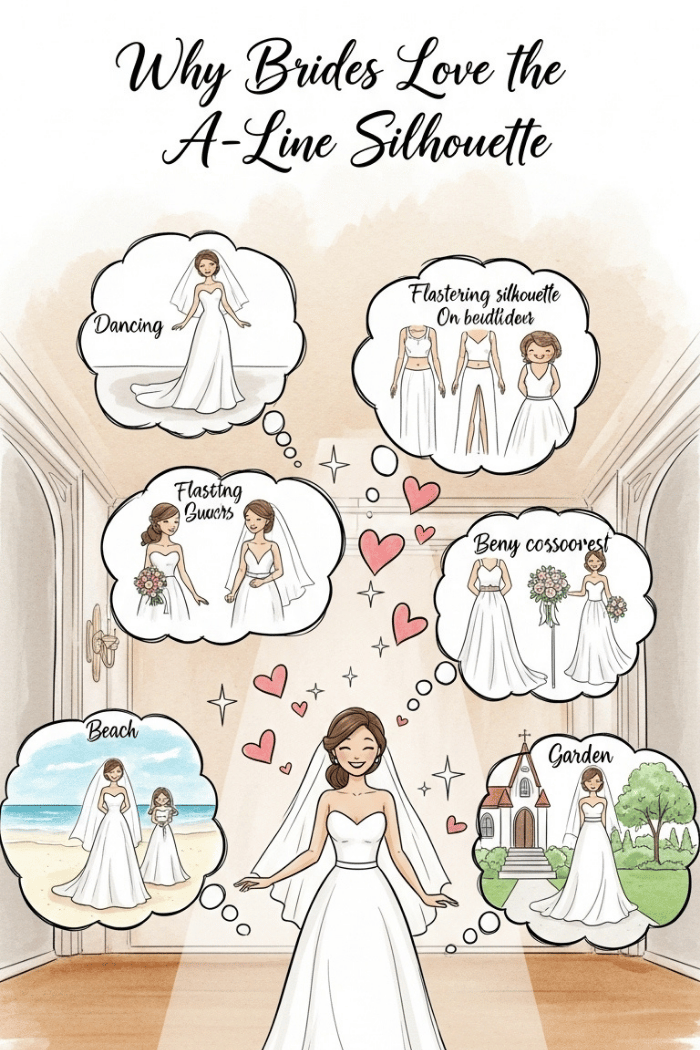
Why Brides Love the A-Line Silhouette
- Universally flattering: Works for a wide range of women’s clothing sizes and body types.
- Versatile styling: Pairs well with different necklines, from sweetheart to bateau, and can incorporate jewellery, lace, or embroidery.
- Comfortable elegance: Offers more freedom of movement than a ball gown while remaining more formal than casual dresses.
- Cultural adaptability: Seen in both Western marriage traditions and global rites of passage ceremonies, reflecting the universal appeal of this fashion choice.
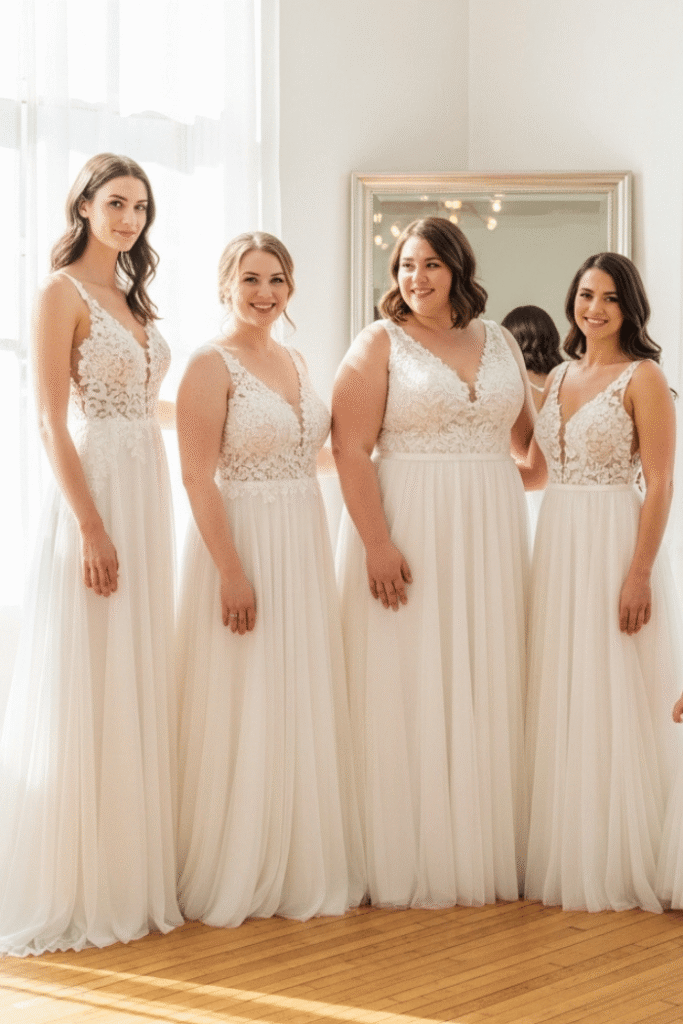
Best Body Types for an A-Line Wedding Dress
- Pear-shaped brides: The flared skirt balances the hips.
- Curvy brides: Accentuates the waist while celebrating natural curves.
- Petite brides: Elongates the frame, making it ideal for shorter brides.
- Tall brides: Softens proportions with flowing gowns and veils.
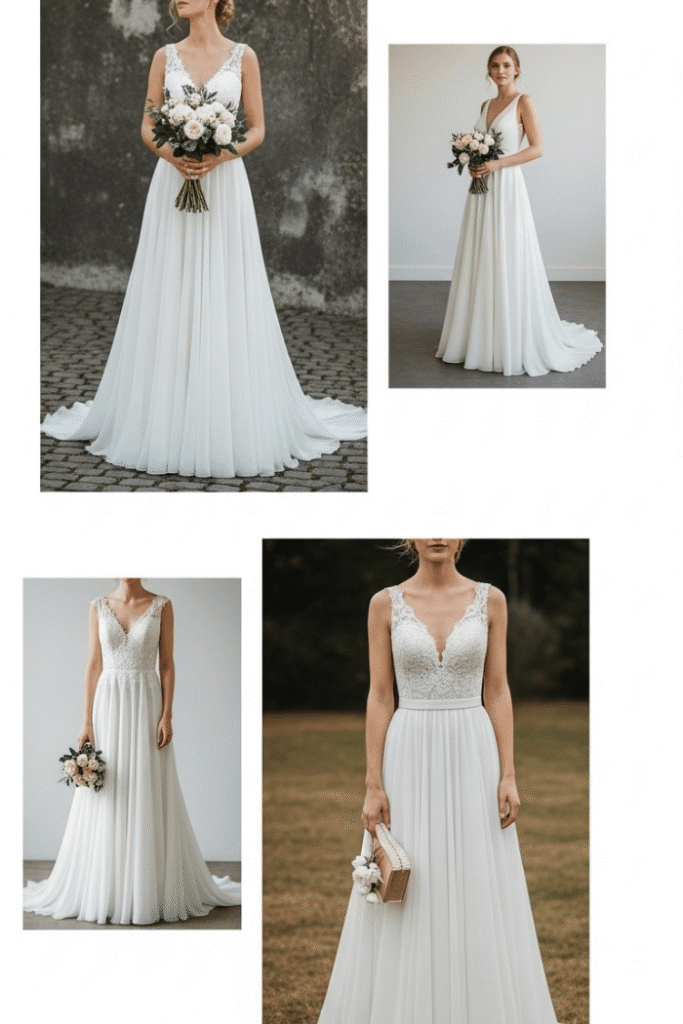
Fabrics, Necklines, and Styling Options
A-line wedding dresses adapt beautifully to different textile arts and fabrics such as satin, chiffon, lace, and tulle. Popular necklines include sweetheart, V-neck, and off-the-shoulder. Brides often accessorize with a veil, shoes, and elegant jewellery to complete the look. This adaptability reflects broader cultural trends in fashion and aesthetics.
Pros and Cons of the A-Line Silhouette
Pros:
- Flattering for most body shapes
- Works well for formal and semi-formal ceremonies
- Comfortable and easy to move in
Cons:
- May lack the dramatic flair of a ball gown
- Less fitted than a sheath dress, which some brides prefer
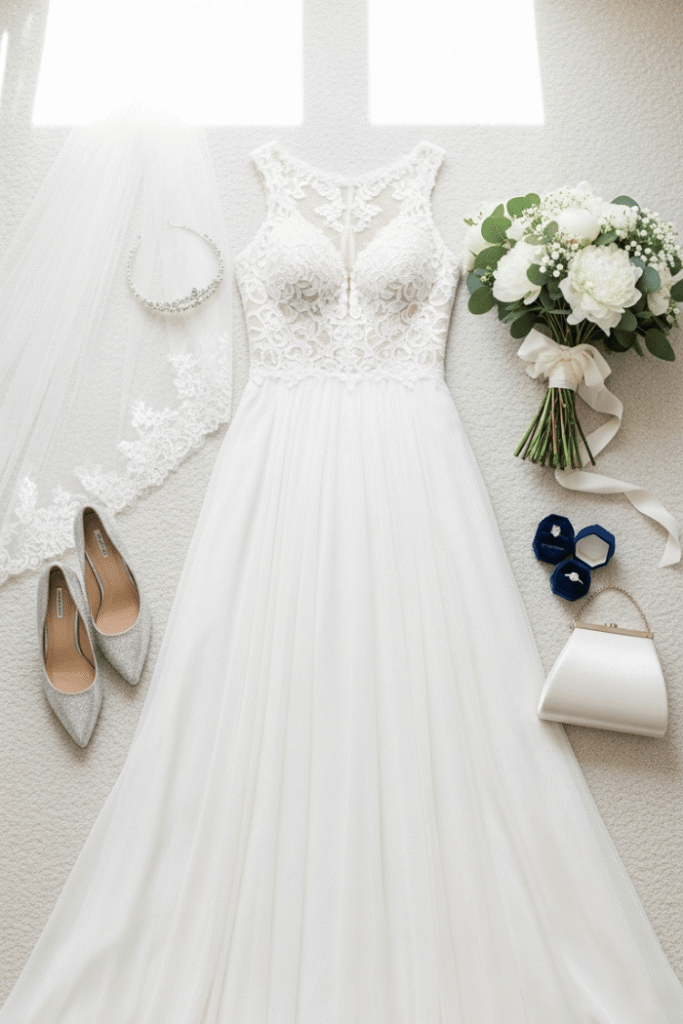
Styling Tips for the A-Line Wedding Dress
- Pair with classic formal wear accessories like pearl jewellery or modern minimalist pieces.
- Opt for shoes that match your comfort level—heels for added height or flats for all-day ease.
- Consider a long veil or white dress accessories for a more traditional look, or keep it simple for a modern trend.
The Timeless Appeal of A-Line Wedding Dresses
From historic costumes in the culture of Europe to modern designer collections, the A-line dress continues to define bridal fashion. Its balance of tradition and modernity makes it more than just a consumer good—it is a symbol of elegance, identity, and one of the most meaningful life cycle ceremonies: the wedding.
FAQ:
Can I customize an A-line dress to suit my personal style?
Absolutely. Many bridal designers and boutiques offer modifications like:
- Changing the neckline or sleeves
- Adding or removing lace, beading, or embroidery
- Adjusting the flare or adding a train
- Incorporating pockets or a slit
6. What accessories pair best with an A-line wedding dress?
Accessories that complement without overpowering:
- Veils: Cathedral, chapel, or fingertip length all work
- Jewellery: Delicate necklaces, bracelets, or statement earrings, depending on the neckline
- Shoes: Heels (for height) or flats (for comfort)—since many hems don’t hide shoes completely
- Belts or sashes: Can accentuate the waist beautifully
7. Can an A-line dress work for nontraditional or themed weddings?
Yes. Some ideas:
- Beach wedding: Use lightweight fabrics (chiffon, tulle) so they flow in the breeze
- Boho style: Add lace sleeves, a loose fit bodice, and floral embroidery
- Winter wedding: Use heavier fabrics like satin or add sleeves and embellishment
8. Should a bride wear shapewear under an A-line dress?
Often, it’s not necessary because the flare hides many lines. However, depending on the bodice cut or fabric, some brides may choose light shaping or smoothing undergarments for confidence.

Sophia Lane is a dedicated bridal fashion writer and wedding style consultant with over a decade of experience in helping brides-to-be discover their dream gowns. With a background in fashion journalism and bridal styling, Sophia specialises in writing detailed, research-driven guides on wedding dress styles, fabrics, accessories, and bridal trends.
Her work blends in-depth fashion knowledge, cultural research, and practical advice, ensuring brides receive content that is both inspiring and actionable. She has studied wedding dress history across cultures, analysed emerging eco-friendly bridal trends, and regularly collaborates with designers to stay updated on the latest collections.
Expertise
-
Wedding dress styles, fabrics, and silhouettes
-
Body-shape based bridal styling (petite, plus size, tall, maternity)
-
Sustainable and eco-friendly bridal fashion
-
Bridal accessories, tailoring, and preservation techniques
-
Global cultural wedding attire traditions

